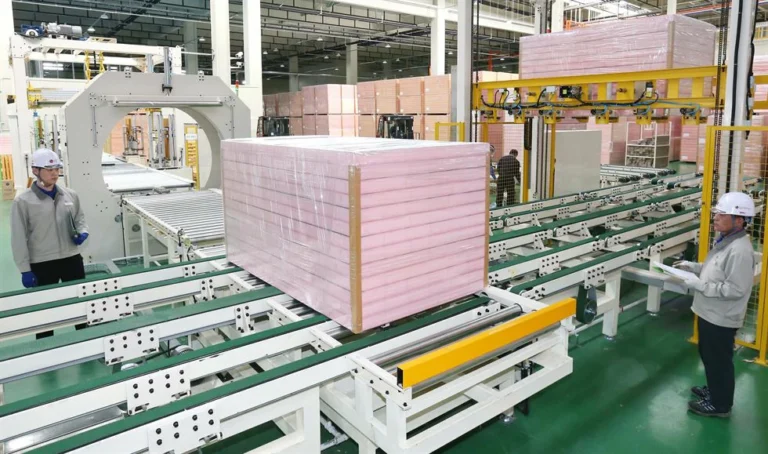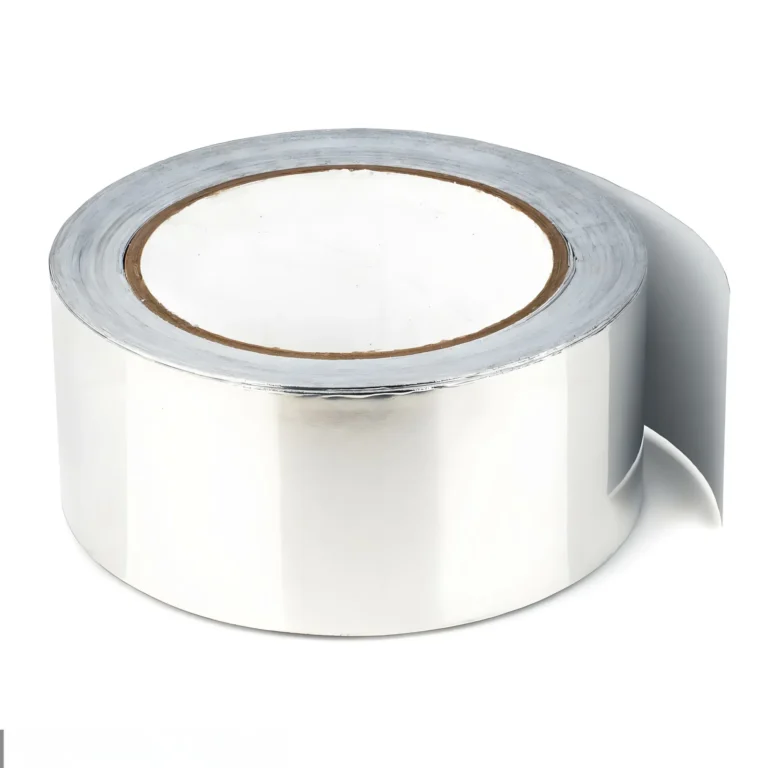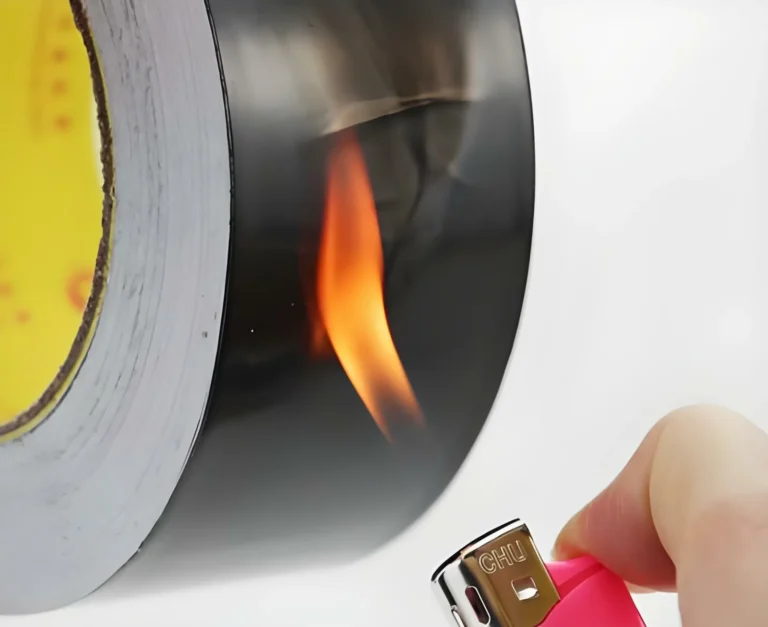Introduction

Aluminized composite materials have revolutionized the way industries approach insulation and fire protection. These materials, including aluminized fabric and fiberglass composites, are renowned for their high heat resistance and durability. They play a crucial role in commercial and industrial insulation, offering superior performance in extreme conditions.
Learn More About:What is Aluminized Fabric
At WT, we specialize in manufacturing these advanced materials. Our process involves the meticulous lamination of aluminum foil to various base materials, such as fiberglass or aramid, using high-grade adhesives. This results in a composite material that can withstand temperatures exceeding 1000°F, making it ideal for industrial applications.
Our commitment to quality control ensures that our products meet the highest standards. We use state-of-the-art manufacturing techniques to create composite materials that are not only heat resistant but also sustainable. This makes WT a trusted supplier for industrial insulation contractors and suppliers worldwide.
View our products: Aluminized Fabric
Understanding Aluminized Composite Materials

Aluminized composite materials are a class of advanced materials designed to provide superior heat resistance, durability, and flame retardancy. These materials are widely used in industrial and commercial insulation services, offering protection in high-temperature environments.
Learn More About:Exploring Aluminized Fabric Definition and Composition
The main components of aluminized composite materials include aluminum foil, which is laminated to a base material such as fiberglass or aramid. Adhesives are used to bond these layers together, creating a strong and resilient composite. The resulting material is not only heat resistant but also exhibits excellent flame retardancy, making it ideal for applications where fire safety is a priority.
Learn More About:A Detailed Look at Different Types of Aluminized Fabric
The properties of aluminized composite materials are particularly impressive. They can withstand temperatures exceeding 1000°F, providing effective thermal insulation even in extreme conditions. This makes them essential for industrial insulation contractors and suppliers, who rely on these materials to protect equipment and structures from high heat.
Moreover, aluminized composite materials are known for their durability. They resist wear and tear, maintaining their insulating properties over time. This longevity reduces the need for frequent replacements, contributing to sustainability in industrial settings.
In summary, the unique combination of heat resistance, durability, and flame retardancy makes aluminized composite materials an indispensable choice for high-temperature thermal insulation. Their use in industrial and commercial applications ensures safety, efficiency, and long-term performance.
Learn More About:Aluminized Fabric: A Game-Changer in Fire Resistance
The Production Process of Aluminized Composite Materials

- Selection and Preparation of Raw Materials
The production of aluminized composite materials begins with the meticulous selection and preparation of raw materials. The criteria for selecting aluminum foil are based on its thickness, purity, and surface finish, as these factors directly impact the final product’s performance.
For the base material, choices such as fiberglass or aramid are made based on the desired properties of the composite. Fiberglass is often preferred for its high strength and heat resistance, making it ideal for high-temperature thermal insulation.
Adhesives are selected based on their ability to bond aluminum foil to the base material effectively. The choice between hot melt adhesives and solvent adhesives depends on the specific application and performance requirements.
- Pretreatment of Aluminum Foil
Before lamination, the aluminum foil undergoes a pretreatment process to ensure optimal adhesion. This includes cleaning and drying to remove any contaminants and surface treatment to enhance adhesion. The foil is typically cleaned using a solvent bath and then dried at a temperature of around 150°F to remove any residual moisture.
- Composite Processes
The composite process involves coating and lamination techniques. Coating techniques apply the adhesive to either the aluminum foil or the base material. Hot melt adhesives are applied at temperatures ranging from 250°F to 400°F, while solvent adhesives are applied at room temperature and then dried to evaporate the solvent.
Lamination techniques include hot press and cold press methods. In a hot press, the materials are bonded under heat and pressure, typically at temperatures between 300°F and 500°F and pressures of 200-400 psi. Cold press lamination is performed at room temperature and lower pressures.
Throughout these processes, parameters such as temperature, pressure, and speed are carefully controlled to ensure consistent and high-quality results. Deviations from the optimal parameters can affect the adhesion strength and overall performance of the composite material.
- Post-Processing
After lamination, the composite material undergoes post-processing steps, including cooling and curing. Cooling is typically done at room temperature or with the aid of cooling systems to rapidly reduce the material’s temperature. Curing may require additional time and controlled conditions to ensure the adhesive fully sets.
Quality inspection is a critical final step. This includes checks for thickness, adhesion strength, and heat resistance. The thickness of the composite material is measured to ensure it meets the specified requirements, typically within a tolerance of ±0.005 inches. Adhesion strength is tested using peel tests, and heat resistance is verified through exposure to high temperatures.
Finally, the material is cut to the desired size and packaged for shipment. Cutting is often done with precision cutting machines to ensure accuracy, and packaging includes protective layers to prevent damage during transport.
Quality Control of Aluminized Composite Materials
Ensuring the highest quality of aluminized composite materials is crucial for their performance in industrial and commercial applications. Quality control involves a series of rigorous inspection standards and testing methods to guarantee that the materials meet the required specifications.

Quality Inspection Standards
Quality inspection standards for aluminized composite materials include checks for thickness, adhesion strength, and heat resistance. These standards are based on industry benchmarks and customer requirements. For example, the thickness of the composite material is typically measured to ensure it falls within a tolerance of ±0.005 inches.
Non-Destructive Testing Techniques
Non-destructive testing techniques are employed to evaluate the quality of the materials without causing damage. These techniques include ultrasonic testing and X-ray inspection, which can detect any imperfections or inconsistencies in the composite structure.
Performance Testing
Performance testing is conducted to assess the material’s properties, including tensile strength, tear resistance, and heat resistance. Tensile strength is measured using a tensile testing machine, which applies force to the material until it breaks, providing a measure of its strength. Tear resistance is tested using a pendulum-type tear tester, which measures the force required to tear the material.
Heat resistance is a critical property for aluminized composite materials. This is tested by exposing the material to high temperatures and measuring its ability to maintain integrity and insulation properties. For instance, the material may be subjected to temperatures of up to 1000°F to ensure it can withstand industrial conditions.
Example Data
- Tensile Strength: The composite material exhibits a tensile strength of 5000 PSI, indicating its high resistance to breaking under tension.
- Tear Resistance:The material requires a force of 100 lb to tear, demonstrating its robustness against tearing.
- Heat Resistance: The material maintains its structural integrity and insulation properties after exposure to temperatures of 1000°F for 30 minutes.
By adhering to these quality control measures, manufacturers like WT ensure that their aluminized composite materials are reliable, durable, and effective in providing high-temperature thermal insulation. This rigorous process ensures that the materials meet the stringent requirements of industrial insulation contractors and suppliers, contributing to safety and efficiency in various industries.
WT's Manufacturing Advantages
WT stands out in the industry with its advanced production equipment, professional technical team, stringent quality management system, and customization services for clients. These advantages ensure that WT’s aluminized composite materials meet the highest standards and exceed client expectations.
Advanced Production Equipment
WT’s manufacturing facility is equipped with state-of-the-art production equipment designed to handle the intricate processes involved in creating aluminized composite materials. This includes high-precision coating machines, lamination presses, and cutting tools. These machines are capable of producing materials with thickness tolerances as low as ±0.001 inches, ensuring consistent and high-quality results.
Professional Technical Team
At the heart of WT’s manufacturing capabilities is a professional technical team with extensive experience in composite materials production. This team oversees every aspect of the manufacturing process, from raw material selection to final quality inspection. Their expertise allows WT to continuously innovate and improve its production techniques, staying ahead of industry standards.
Stringent Quality Management System
WT has implemented a stringent quality management system that adheres to international standards such as ISO 9001. This system includes regular audits, process monitoring, and continuous improvement initiatives. By maintaining such a rigorous quality management system, WT ensures that all products meet or exceed industry benchmarks for performance and reliability.
Customization Services for Clients
Understanding that each client may have unique requirements, WT offers customization services to tailor aluminized composite materials to specific needs. This includes variations in material composition, thickness, and size. WT’s technical team works closely with clients to understand their specific applications and provide solutions that precisely match their needs.
Example Data
- Equipment Precision: WT’s coating machines can apply adhesives with a precision of ±001 inches, ensuring uniform coating thickness.
- Quality Audits: WT conducts monthly quality audits, resulting in a 99.5% product pass rate.
- Custom Orders:WT has successfully completed over 100 custom orders in the past year, with a client satisfaction rate of 98%.
These advantages make WT a leading manufacturer of aluminized composite materials, capable of delivering high-quality, customized solutions that meet the diverse needs of industrial and commercial applications.
Environmental and Sustainability Considerations
WT is committed to environmental stewardship and sustainability in the production of aluminized composite materials. This commitment is reflected in the environmental properties of the materials themselves and the sustainable practices employed throughout the manufacturing process.

Environmental Properties of Aluminized Composite Materials
Aluminized composite materials are inherently environmentally friendly due to their durability and energy-saving properties. These materials provide excellent thermal insulation, reducing the energy consumption of buildings and industrial processes. For example, aluminized fabric can reduce heat loss by up to 50%, leading to significant energy savings and a lower carbon footprint.
Sustainable Practices in the Production Process
WT incorporates sustainable practices into every stage of the production process. This includes the use of energy-efficient equipment, minimization of waste, and the implementation of a closed-loop system for solvent recovery. By reducing energy consumption and waste, WT not only lowers its environmental impact but also enhances cost-efficiency.
Recycling and Reuse
Recycling and reuse are key components of WT’s sustainability strategy. Aluminized composite materials are designed for longevity, reducing the need for frequent replacement. Additionally, WT promotes the recycling of its materials at the end of their life cycle. For instance, aluminum foil can be recycled indefinitely without loss of quality, contributing to a circular economy.
Example Data
- Energy Savings: Buildings insulated with aluminized composite materials can save up to 30% on heating and cooling costs.
- Waste Reduction:WT’s manufacturing process generates 20% less waste compared to industry averages.
- Recycling Rate:Aluminum foil used in WT’s products has a recycling rate of over 90%, significantly reducing environmental impact.
By prioritizing environmental and sustainability considerations, WT ensures that its aluminized composite materials not only meet the highest performance standards but also contribute to a healthier planet. This commitment aligns with the growing demand for sustainable solutions in industrial and commercial applications.
Conclusion
The manufacturing process of aluminized composite materials is a testament to WT’s expertise and commitment to quality. From the selection and preparation of raw materials to the stringent quality control measures, every step is meticulously executed to ensure the highest performance standards.
WT’s advanced production equipment, professional technical team, and sustainable practices position the company as an industry leader in the production of high-performance materials. The company’s ability to customize solutions for clients further solidifies its leading position in the market.
As industries continue to demand materials that offer superior heat resistance, durability, and sustainability, WT remains at the forefront of innovation. The company’s ongoing focus on high-performance materials not only meets current needs but also anticipates future challenges, ensuring that WT remains a trusted partner for industrial and commercial insulation solutions
In summary, WT’s manufacturing process of aluminized composite materials is a model of precision, quality, and sustainability. The company’s dedication to excellence and innovation makes it a clear choice for clients seeking reliable and high-performing insulation materials. As WT continues to push the boundaries of what’s possible, it reaffirms its commitment to being a leader in the industry.



